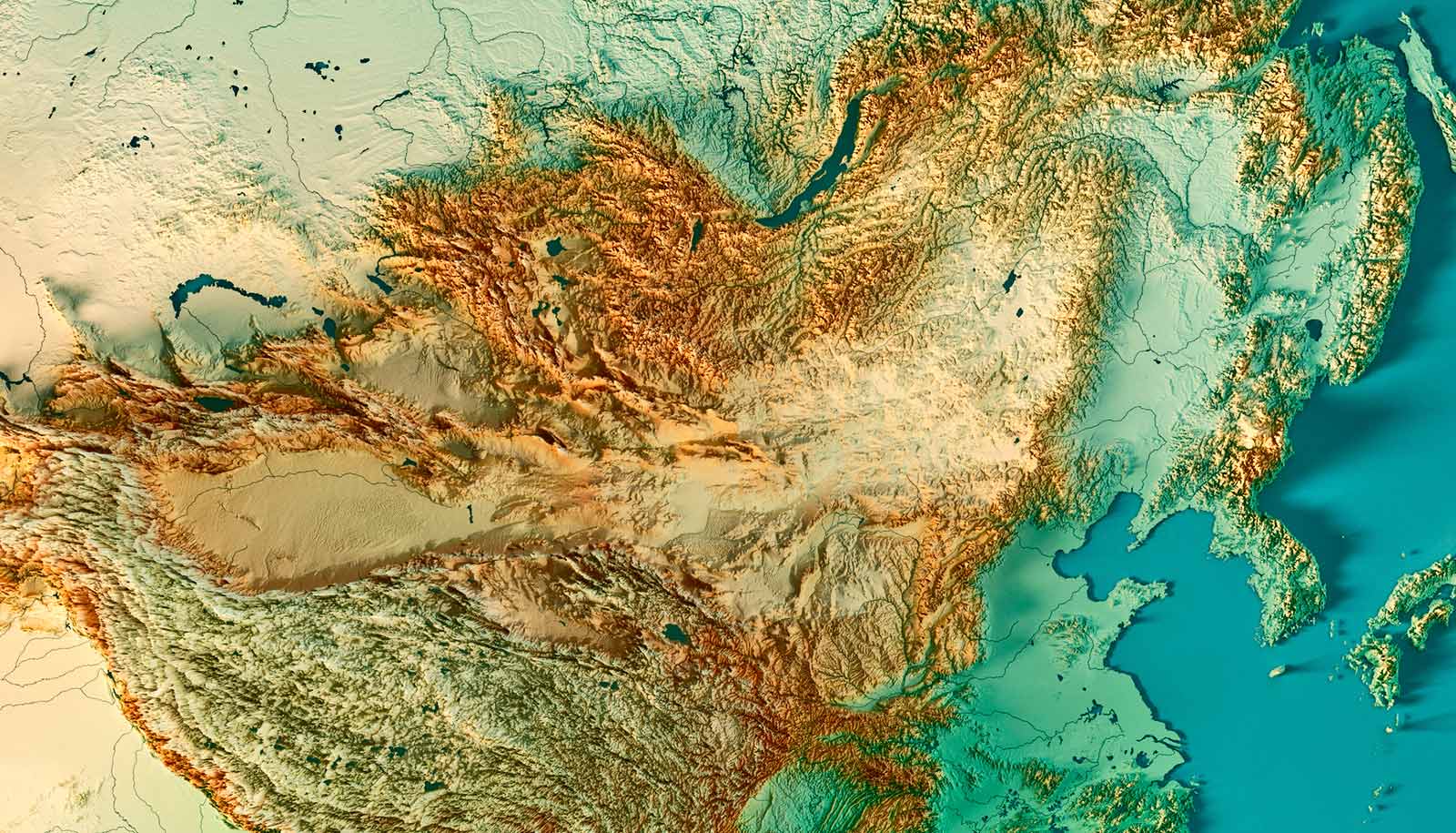New research examines the interplay between the evolution of the landscape, climate, and fossil record of mammal evolution and diversification in the Western United States.
A little explored aspect of this geosciences research is the connection between gravitational forces deep in the Earth and landscape evolution.
Now in a paper in Nature Communications, the researchers show by way of computer modeling that deep roots under mountain belts (analogous to the massive ice below the tip of an iceberg) trigger dramatic movements along faults that result in collapse of the mountain belt and exposure of rocks that were once some 15 miles below the surface.
The origin of these enigmatic exposures, called “metamorphic core complexes,” has been hotly debated within the scientific community.
The new finding may alter the way scientists attempt to uncover the history of Earth as an evolving planet.
Lead principal investigator William E. Holt, a professor of geophysics the department of geosciences at Stony Brook University, first author Alireza Bahadori, a former PhD student under Holt now at Columbia University, and colleagues found that these core complexes are a fossil signature of past mountain belts in the Western United States that occupied regions around Phoenix and Las Vegas.
These mountain areas left traces in the form of gravel deposits from ancient northward and eastward flowing rivers, found today south and west of Flagstaff, Arizona.
The work articulated in the paper highlights the development of what the research team terms as a general model for metamorphic core complex formation and a demonstration that they result from the collapse of a mountain belt supported by a thickened crustal root.
The authors further explain: “We show that gravitational body forces generated by topography and crustal root cause an upward flow pattern of the ductile lower-middle crust, facilitated by a detachment surface evolving into a low-angle normal fault. This detachment surface acquires large amounts of finite strain, consistent with thick mylonite zones found in metamorphic core complexes.”
The work builds on research also published in Nature Communications in 2022. Holt and colleagues published a first-of-a-kind model in three dimensions to illustrate the linkage between climate and tectonics to simulate the landscape and erosion/deposition history of the region before, during, and after the formation of these metamorphic core complexes.
The researchers linked this modeling to a global climate model that predicted precipitation trends throughout the southwestern US over time. The 3D model accurately predicts deposition of sediments in basins that contain the mammal fossil and climate records.
The group also published a paper in Science Advances in November 2021, led by team member Katie Loughney.
This research showed that a major peak in mammal diversification can be statistically tied to the peak in extensional collapse of the ancient mountain belts. Thus, the collaborative study is the first of its kind to quantify how deep Earth forces combine with climate to influence the landscape and affect mammal diversification and species dispersal found within the fossil record.
Additional researchers from Stony Brook; the University of Michigan; University of Connecticut; Purdue University; as well a researcher from a consulting business, e4Sciences, contributed to the work.
The study required the vast computing resources provided by the High-Performance Computing Cluster SeaWulf at Stony Brook University. The climate modeling, produced by Ran Feng of the University of Connecticut, was supported by the Cheyenne supercomputer maintained at NCAR-Wyoming Supercomputing Center.
Much of the research that led to these findings reported in each of the papers was supported by multiple grants from the National Science Foundation.
Source: Stony Brook University



